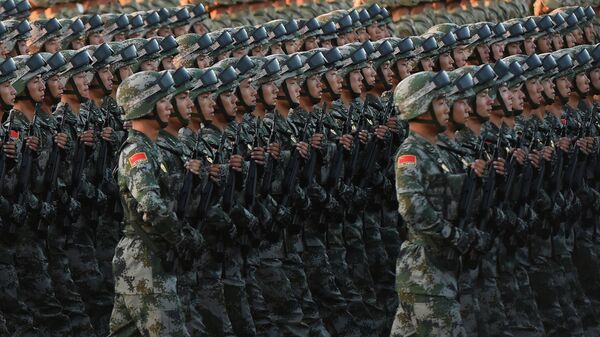The People’s Liberation Army (PLA) Daily, in a series of publications, has echoed growing discontent with the Communist Party decision to get rid of three hundred thousand (13 percent) of its 2.3 million soldiers, Reuters reports.
Just days after Beijing's spectacular September 3rd military parade astounded the world, the PLA newspaper said the military reforms, including personnel reduction, would require “an assault on fortified positions” to transform mindsets and wipe out settled interests, adding that the difficulties awaited would be “unprecedented”, Reuters reveals.
If the measures failed, additional steps would be hollow, amounting to “nothing more than an empty sheet of paper”, according to the publication Reuters refers to.
A week later, the PLA Daily described the emotions that the proposed reforms have elicited in the Chinese army.
“Some units suffer from inertia and think everything's already great. Some are scared of hardship, and blame everyone and everything but themselves… They shirk work and find ways of avoiding difficulty,” the commentary exposed.
State media, in their turn, described how the reforms would benefit the PLA’s effectiveness.
For example, the seven military regions of China, which are each traditionally geared towards land warfare and have separate command structures, are expected to be made less important.
This arrives on the tails of the current switch to naval and air force deployments from an essentially WWII-inspired concept of massive land warfare, which has prevailed for several decades.
Meanwhile, some Chinese military experts support Xi Jinping’s efforts to reform the PLA.
“A reasonable ratio of the land, air and naval forces should be 2:1:1. China has traditionally placed a heavy focus on ground forces, which make up 70 percent of the entire PLA,” Xu Guangyu, a senior consultant from the Chinese Military Disarmament Control Council, told the Global Times.
Xu highlighted that China should continue the expansion of use of its navy and air force in protecting national interests overseas.
With a staff of 2.3 million, today's People's Liberation Army, consisting of four service branches including the Ground Force (1.6 million personnel), the Navy (255,000), the Air Force (400,000) and the Second Artillery Corps (the country's strategic nuclear forces, 100,000 personnel), is presently the world's largest military force.
The PLA's budget, equivalent to $141 billion, or 1.5 percent of the country's GDP, was ranked second in the world behind that of the United States ($581 billion, 3.3 percent of GDP in 2015).
China's endeavor to modernize its armed forces has been fiercely criticized by Western observers, although Beijing has repeatedly emphasized that its efforts are aimed at preserving peace through a fairer global balance of power.






